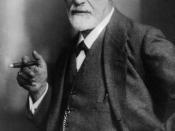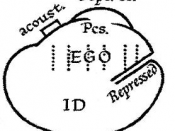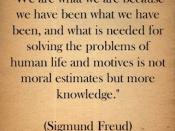Freud's methods of psychoanalysis were based on his theory that people have repressed, hidden feelings. The psychoanalyst's goal is to make the patient aware of these subconscious feelings. Childhood conflicts that are hidden away by the patient become revealed to both the analyst and the patient, allowing the patient to live a less anxious, healthier life.
Methods of hypnosis were originally used by Freud to find the cause for anxiety, but he dismissed them as being too inaccurate. He started to use methods of free association to delve into the patient's sub-conscious. By assessing the patient's reactions to the analyst's suggestions, Freud saw that the analyst could help the patient become consciously aware of his repressed childhood conflicts and impulses. By interpreting the patient's dreams, the analyst can provide an insight into the patient's conflicts as well. The therapist's interpretations of the patient's free associations and dreams are known as psychoanalysis.
Freud's theory of psychoanalysis, however, does have its problems. One of its drawbacks is that it is based on the assumption that repressed conflicts and impulses do in fact exist. Today this assumption is being challenged, and is provoking intense debate.
Freud first developed these methods of psychoanalysis when he met with patients whose disorders did not make neurological sense. A patient, for example, may have suddenly gone blind. The problem is that there is no damage to either of his eyes. Freud began to wonder if this disorder might be psychological rather than physiological. A patient not wanting to see something that aroused anxiety might have caused his own blindness, he hypothesized. In order to find out what the anxiety stemmed from, he used methods of free association where the patient would say whatever came into his mind. Through the slips made when the patient was...



Good
a perfect essay for showing a class of experience
1 out of 1 people found this comment useful.